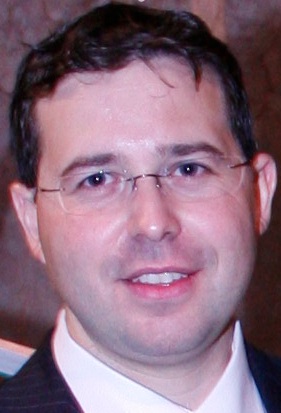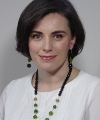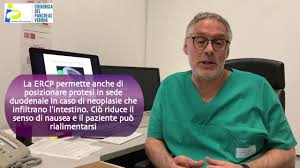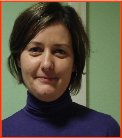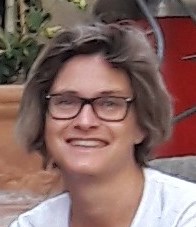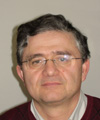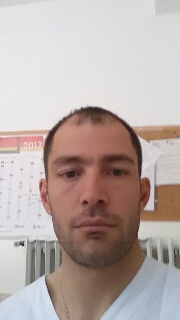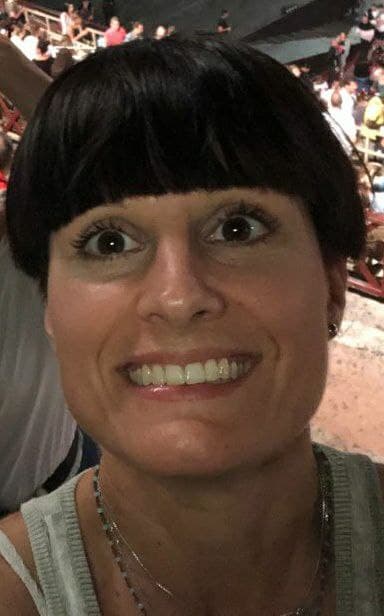Studying at the University of Verona
Here you can find information on the organisational aspects of the Programme, lecture timetables, learning activities and useful contact details for your time at the University, from enrolment to graduation.
Academic calendar
The academic calendar shows the deadlines and scheduled events that are relevant to students, teaching and technical-administrative staff of the University. Public holidays and University closures are also indicated. The academic year normally begins on 1 October each year and ends on 30 September of the following year.
Course calendar
The Academic Calendar sets out the degree programme lecture and exam timetables, as well as the relevant university closure dates..
| Period | From | To |
|---|---|---|
| FISIO VI 3^ ANNO - 1^ SEMESTRE | Oct 1, 2018 | Nov 16, 2018 |
| FISIO VI 2^ ANNO - 1^ SEMESTRE | Oct 1, 2018 | Nov 23, 2018 |
| FISIO VI 1^ ANNO - 1^ SEMESTRE | Oct 15, 2018 | Dec 21, 2018 |
| FISIO VI 2^ ANNO - 2^ SEMESTRE | Mar 4, 2019 | Apr 26, 2019 |
| FISIO VI 1^ ANNO - 2^ SEMESTRE | Mar 4, 2019 | May 10, 2019 |
| FISIO VI 3^ ANNO - 2^ SEMESTRE | Mar 4, 2019 | Apr 13, 2019 |
| Session | From | To |
|---|---|---|
| FISIO VI SESSIONE INVERNALE | Jan 7, 2019 | Feb 1, 2019 |
| FISIO VI SESSIONE ESTIVA | Jul 1, 2019 | Jul 31, 2019 |
| FISIO VI SESSIONE AUTUNNALE | Sep 2, 2019 | Sep 27, 2019 |
| Session | From | To |
|---|---|---|
| FISIO SESSIONE AUTUNNALE | Nov 1, 2019 | Nov 30, 2019 |
| FISIO SESSIONE PRIMAVERILE | Mar 1, 2020 | Mar 31, 2020 |
| Period | From | To |
|---|---|---|
| Festa di Ognissanti | Nov 1, 2018 | Nov 1, 2018 |
| Festa dell’Immacolata | Dec 8, 2018 | Dec 8, 2018 |
| VACANZE DI NATALE | Dec 24, 2018 | Jan 6, 2019 |
| Vacanze di Pasqua | Apr 19, 2019 | Apr 28, 2019 |
| Festa della liberazione | Apr 25, 2019 | Apr 25, 2019 |
| Festa del lavoro | May 1, 2019 | May 1, 2019 |
| Festa della Repubblica | Jun 2, 2019 | Jun 2, 2019 |
| Vacanze estive | Aug 5, 2019 | Aug 18, 2019 |
| Festa S. Patrono Vi | Sep 8, 2019 | Sep 8, 2019 |
| Description | Period | From | To |
|---|---|---|---|
| FISIO VI 3^ anno - 1^semestre (1 periodo) | FISIO VI 3^ anno - 1^semestre (1 periodo) | Nov 19, 2018 | Dec 21, 2018 |
| FISIO VI 2^ anno - 1^semestre (1 periodo) | FISIO VI 2^ anno - 1^semestre (1 periodo) | Nov 26, 2018 | Dec 21, 2018 |
| FISIO VI 1^ anno - 1^semestre | FISIO VI 1^ anno - 1^semestre | Feb 4, 2019 | Mar 1, 2019 |
| FISIO VI 3^ anno - 1^semestre (2 periodo) | FISIO VI 3^ anno - 1^semestre (2 periodo) | Feb 4, 2019 | Mar 1, 2019 |
| FISIO VI 2^ anno - 1^semestre (2 periodo) | FISIO VI 2^ anno - 1^semestre (2 periodo) | Feb 4, 2019 | Mar 1, 2019 |
| FISIO VI 3^ anno - 2^semestre | FISIO VI 3^ anno - 2^semestre | Apr 15, 2019 | Jun 21, 2019 |
| FISIO VI 2^ anno - 2^semestre | FISIO VI 2^ anno - 2^semestre | Apr 29, 2019 | Jun 21, 2019 |
| FISIO VI 1^ anno - 2^semestre | FISIO VI 1^ anno - 2^semestre | May 13, 2019 | Jun 21, 2019 |
Exam calendar
Exam dates and rounds are managed by the relevant Medicine Teaching and Student Services Unit.
To view all the exam sessions available, please use the Exam dashboard on ESSE3.
If you forgot your login details or have problems logging in, please contact the relevant IT HelpDesk, or check the login details recovery web page.
Should you have any doubts or questions, please check the Enrollment FAQs
Academic staff
 marco.carradore@univr.it
marco.carradore@univr.it
 davideconte.bioeng@gmail.com
davideconte.bioeng@gmail.com
Cunico Laura
 laura.cunico@univr.it
laura.cunico@univr.it
Giacomuzzi Renata
 giada.goracci@univr.it
giada.goracci@univr.it
Negrin Rolando
 segreteria.pneumo@ulssvicenza.it
segreteria.pneumo@ulssvicenza.it
 0444/753634
0444/753634
Pighi Michele
 michele.pighi@univr.it
michele.pighi@univr.it
 0458122320
0458122320
Randon Fabio Mario
 bruno.sandini@aulss8.veneto.it
bruno.sandini@aulss8.veneto.it
Scarton Cinzia
Study Plan
The Study Plan includes all modules, teaching and learning activities that each student will need to undertake during their time at the University.
Please select your Study Plan based on your enrollment year.
1° Year
| Modules | Credits | TAF | SSD |
|---|
2° Year activated in the A.Y. 2019/2020
| Modules | Credits | TAF | SSD |
|---|
3° Year activated in the A.Y. 2020/2021
| Modules | Credits | TAF | SSD |
|---|
| Modules | Credits | TAF | SSD |
|---|
| Modules | Credits | TAF | SSD |
|---|
| Modules | Credits | TAF | SSD |
|---|
Legend | Type of training activity (TTA)
TAF (Type of Educational Activity) All courses and activities are classified into different types of educational activities, indicated by a letter.
Propaedeutic physical and biological sciences (2018/2019)
The teaching is organized as follows:
Learning outcomes
L’insegnamento si propone di fornire le conoscenze di base di biologia, biochimica, fisica e statistica, tenendo in particolare considerazione quelle maggiormente utili alla comprensione ed all’approfondimento di problematiche biomediche associate alla fisioterapia e di fornire i fondamenti del metodo sperimentale alla base delle moderne discipline scientifiche e tecnologiche, per educare lo studente al rigore scientifico e alla valutazione critica dei dati sperimentali. A completamento del corso lo studente avrà acquisito le competenze necessarie per comprendere, descrivere e analizzare i fenomeni naturali, biologici e fisici, con particolare riguardo alle problematiche biomediche e sarà in grado di spiegare i meccanismi molecolari e cellulari alla base del funzionamento dell’intero organismo e cogliere il significato patogenetico di eventuali alterazioni di essi, dimostrando inoltre la capacità di esporre le argomentazioni relative alle conoscenze acquisite in modo preciso, con valutazione critica e con linguaggio scientifico appropriato. Avrà infine sviluppato la capacità di affrontare con buona autonomia ulteriori approfondimenti specialistici che saranno oggetto degli insegnamenti dei successivi anni di corso.
MODULO: FISICA APPLICATA Fornire conoscenze di base sulle grandezze e sulle leggi fondamentali della Fisica, in particolare della meccanica e sulla loro applicazione in fenomeni e situazioni concrete di interesse biomedico e far acquisire capacità di risolvere semplici problemi di Fisica, soprattutto di Biomeccanica, anche applicati a situazioni concrete.
MODULO: BIOCHIMICA Fornire conoscenze di base di chimica organica e biochimica sulle relazioni struttura-funzione delle principali classi di macromolecole biologiche, sulla regolazione metabolica a livello molecolare e sulle interconnessioni esistenti tra i diversi processi biochimici e sulle trasformazioni energetiche ad essi connesse.
MODULO: BIOLOGIA APPLICATA Fornire competenze di biologia e genetica umana, in una visione evoluzionistica, relative alle caratteristiche strutturali, funzionali e molecolari dei processi cellulari comuni agli organismi viventi e in particolare dei meccanismi di base che regolano attività, riproduzione, interazioni cellulari e la trasmissione dei caratteri ereditari normali e patologici nell’uomo. MODULO: STATISTICA DESCRITTIVA Fornire competenze nell'ambito della bio-statistica con particolare riguardo ai metodi statistici di base per l'analisi di dati biomedici come la modalità di raccolta e sintesi dei dati di ricerca clinica o epidemiologica, calcolo delle probabilità, generalizzare le informazioni raccolte su un campione alla popolazione di origine, la rappresentazione grafica di sintesi e l’interpretazione dei principali risultati statistici.
Program
------------------------
MM: BIOCHIMICA
------------------------
PREPARATORY CHEMISTRY (several notions are included in the basic knowledge required). 1. Atomic structure and periodic properties of the elements: matter composition, atom, atomic particles; atomic theory; quantum numbers, and orbitals; electronic configuration, periodic table and chemical reactivity of the elements; electronic affinity, electronegativity. 2. The chemical bond: molecules and ions; ionic and covalent bond; intermolecular forces; hydrogen bond. 3. Solutions and acid-base reactions: concentration of the solutions, acid-base theories of Arrhenius and Brőnsted-Lowry; hydracids, hydroxides, oxyacids; acid-base reactions; pH and buffer solutions. 4. Organic chemistry notions: carbon atom properties; hybrid orbitals; organic compounds classification: functional groups; hydrocarbons; alcohols, ethers, thiols, amines, aldehydes and ketones; carboxylic acids, esters, anhydrides. BIOCHEMISTRY 1. Constitutive elements of the living matter: polymeric structure of the biological macromolecules. 2. Protein structure and function: aminoacid classification, buffering power, peptide bond, levels of protein structure; fibrous and globular proteins; hemoglobin and myoglobin: structure, function, factors influencing the oxygen bond; hemoglobin variants; enzymes: classification, role in the chemical reactions, regulation of the enzymatic activity. 3. Vitamins: hydro- and lypo-soluble vitamins; co-enzymes. 4. Bio-energetics: metabolism; chemical transformations in the cell; spontaneous and non-spontaneous reactions of the metabolic reactions; ATP as “energy exchange coin”; biologically relevant redox reactions. 5. Carbohydrates structure and metabolism: mono- and disaccharides; polysaccharides; glycoconjugates; glycolysis and its regulation; gluconeogenesis; hints of the penthose phosphate pathway; synthesis of the glycogen. 6. Citric acid cycle and oxidative phosphorylation: mitochondria; acetyl-CoA synthesis; citric acid cycle control; respiratory chain and electron transport; ATP synthesis. 7. Lipids structure and metabolism: structural lipids and biological membranes; cholesterol; stock-reserve lipids; lipids digestion and fatty acid β-oxydation; keton bodies formation; hints of fatty acids biosynthesis. 8. Aminoacid metabolism: hints of gluco- and keto-forming aminoacids; transamination and oxidative deamination; the urea cycle. Frontal teaching is the exclusive method adopted in this Course.
------------------------
MM: FISICA APPLICATA
------------------------
INTRODUCTION examples, measurement units POINT KINEMATICS position, displacement, velocity, acceleration linear motion, circular motion vectors POINT KINETICS Forces, Newton's laws Power, work, kinetic energy, potential energy, mechanical energy Conservative and not-conservative forces examples ROTATIONAL DYNAMICS AND EQUILIBRIUM rigid body definition, translation and rotation Moment of Inertia Torques Static equilibrium of a rigid body examples
------------------------
MM: STATISTICA DESCRITTIVA
------------------------
Use of statistics in health data Collection and presentation: Measurement procedure and Variable types Precision and accuracy of a measurement procedure Tables 1 and 2 entries Absolute and relative frequencies Cumulative frequencies Graphical representation of the data Position and dispersion measures: Mode Quantiles and median Simple and weighted mean Range and standard deviation Coefficient of variation Introduction to probability • Definition of probability • Rule of addition and multiplication • Independent and conditional probability
------------------------
MM: BIOLOGIA APPLICATA
------------------------
Characteristics of the living beings. Major themes and fundamental concepts of biology. Origin of life. Cell Theory. Biological kingdoms and domains. Evolution and Natural Selection. Water: characteristics and biological importance. Eukaryotic and prokaryotic cell and viruses: common features and differences. Endosymbiotic theory and evolution from prokaryotes to eukaryotes to multicellular organisms. Structure, function and organization of the cell: main characteristics and functions of organelles and cytoskeleton. Role of internal compartmentalization. Biological membrane: structure, properties and function. Movement of molecules across cell membranes: passive (osmosis, simple diffusion, facilitated diffusion) and active transport (primary and secondary; exocytosis and endocytosis). Cell junctions. Cell communication and signaling pathways: Signal Reception: ligands and receptors. Signal Transduction: second messengers, signaling cascade and message amplification. Cellular responses. The human genome: Organisation of DNA in chromosomes. Structure and organisation of chromosomes. Nucleosomes and packed chromosome. Euchromatin and Heterochromatin. Cell cycle: definition, significance of the phases and regulation. Hints about cell death and staminal cells. Cell division. Asexual reproduction and Mitosis. Sexual reproduction and meiosis. Crossing-over. Human gametogenesis. Chromosomal bases of inheritance: Autosome and sexual chromosomes. Dosage compensation and X inactivation in Mammals. Normal and pathological human karyotype. Structural and numerical chromosomal abnormalities. Molecular bases of inheritance. DNA: structure, function, replication and its role in heredity. Definition of gene. Informational pathway: transcription, RNA processing (splicing), genetic code, RNA translation and protein synthesis. Hints about regulation of gene expression in eukaryotes. DNA mutation. Different classes of mutations. Spontanous mutations. Mutations induced by chemicals or physical agents. DNA repair mechanisms. Somatic mutations and cancer. Mendelian genetics and Heredity. Definition of phenotype, genotype, locus, gene, allele, domin ant, rtecessive, homozygote and heterozygote. Mendel’s laws. Allele segregation and independent assortment of genes. Gene – chromosome relationship: independence and association; genetic recombiantion. Genetics of AB0 and Rh blood groups. Modes of transmission of genetic information. Inheritance patterns: autosomal (dominant and recessive) and sex-linked (dominant and recessive) inheritance. Introduction to transmission of complex characters. Hereditary and genetic diseases. Examples. Exceptions to Mendelian inheritance: penetrance, expressivity, incomplete dominance and codominance, multiple alleles, epistasis, polygenic characters, mitochondrial inheritance, environmental influence.
Bibliography
| Author | Title | Publishing house | Year | ISBN | Notes |
|---|---|---|---|---|---|
| Stefani M, Taddei N | Chimica Biochimica e Biologia Applicata. | Zanichelli ed., Bologna | 2010 | ||
| M. Samaja, R. Paroni | Chimica e Biochimica | Piccin | 2016 | ||
| Bertoldi, Colombo, Magni, Marin, Palestini | Chimica e Biochimica | EdiSES | 2015 | 978-88-7959-878-1 | |
| A. Fiecchi, M. Galli Kienle, A. Scala | Chimica e propedeutica biochimica | Edi-Ermes | |||
| Luciano BINAGLIA, Bruno GIARDINA | CHIMICA e PROPEDEUTICA BIOCHIMICA (con CD-ROM) | Ediz. Mc Graw-Hill | |||
| D. Voet, J. G. Voet, C.W. Pratt | Fondamenti di Biochimica (Edizione 4) | Zanichelli | 2017 | 9788808420961 | |
| David L Nelson, Michael M Cox | I principi di biochimica di Lehninger (Edizione 7) | Zanichelli | 9788808920690 | ||
| Walker James S | FISICA - MECCANICA (Edizione 1) | Zanichelli | 2004 | 8808076814 | |
| Halliday D., Resnick R., Walker J. | Fondamenti di FISICA (Edizione 4) | Casa Editrice Ambrosiana | 2001 | 8840809651 | |
| Solomon, Martin, Martin, Berg | Elementi di Biologia (Edizione 7) | EdiSES | 2017 | 978-88-7959-938-2 | |
| Sadava, Hillis, Craig Heller, Hacker | Elementi di Biologia e Genetica (Edizione 5) | Zanichelli | 2019 | 9788808820655 | |
| Lantieri PB, Risso D, Ravera G | Elementi di Statistica Medica | McGraw-Hill | 2007 | ||
| Verlato G, Zanolin ME | Esercizi di Statistica Medica, Informatica ed Epidemiologia | Libreria Cortina Editrice, Verona | 2000 | ||
| Glantz SA | Statistica per Discipline Biomediche (Edizione 6) | McGraw-Hill | 2007 | 9788838639258 |
Examination Methods
The exam consists of 4 written tests, one for each module, based on all the issues covered throughout the course. Tests can be passed separately as long as they are taken within the same academic year. For each academic year, 6 periods are available to take the exams: 2 in the Winter Session at the end of the course, 2 in the Summer Session and 2 in the Autumn Session. In order to gain access to the biology test, students must have first discharged any training debts relating to the minimum biology, chemistry and physics knowledge.
To pass the exam, students must get a score of not less than 18/30 in each test. The final mark (/out of 30) willl derive from the weighted average over credits of each single test score. Students can retire or refuse the proposed score: in such case, any partial credit will be canceled and the students shall enroll again for the whole examination (all the 4 tests).
Career prospects
Module/Programme news
News for students
There you will find information, resources and services useful during your time at the University (Student’s exam record, your study plan on ESSE3, Distance Learning courses, university email account, office forms, administrative procedures, etc.). You can log into MyUnivr with your GIA login details: only in this way will you be able to receive notification of all the notices from your teachers and your secretariat via email and soon also via the Univr app.
Graduation
Documents
| Title | Info File |
|---|---|
|
|
pdf, it, 367 KB, 19/02/24 |
|
|
pdf, it, 142 KB, 19/01/24 |
|
|
pdf, it, 862 KB, 19/01/24 |
|
|
pdf, it, 273 KB, 25/03/24 |
Gestione carriere
Student login and resources
Appelli d'esame
Si pubblicano gli appelli per la sessione estiva per il 2° anno A.A 2023/2024
Si pubblicano gli appelli per la sessione estiva per il 1° e 3° anno A.A. 2023/2024
Documents
| Title | Info File |
|---|---|
|
|
pdf, it, 426 KB, 23/04/24 |
|
|
pdf, it, 419 KB, 08/04/24 |
|
|
pdf, it, 412 KB, 23/04/24 |
Orario lezioni
AVVISO ACCOGLIENZA STUDENTI 1° A a.a 2023/2024
CALENDARIO DIDATTICO 2023/2024
Si pubblica il calendario dellle lezioni 3° anno 2 semestre 2023/2024
AGGIORNAMENTO 7 MARZO 2024 Calendario lezioni 1° A 2° semestre
Documents
| Title | Info File |
|---|---|
|
|
pdf, it, 215 KB, 07/03/24 |
|
|
pdf, it, 114 KB, 21/09/23 |
|
|
pdf, it, 156 KB, 12/10/23 |
|
|
pdf, it, 229 KB, 06/02/24 |
Attività Seminariali/a scelta dello studente
Attività Seminariali/a scelta dello studente



